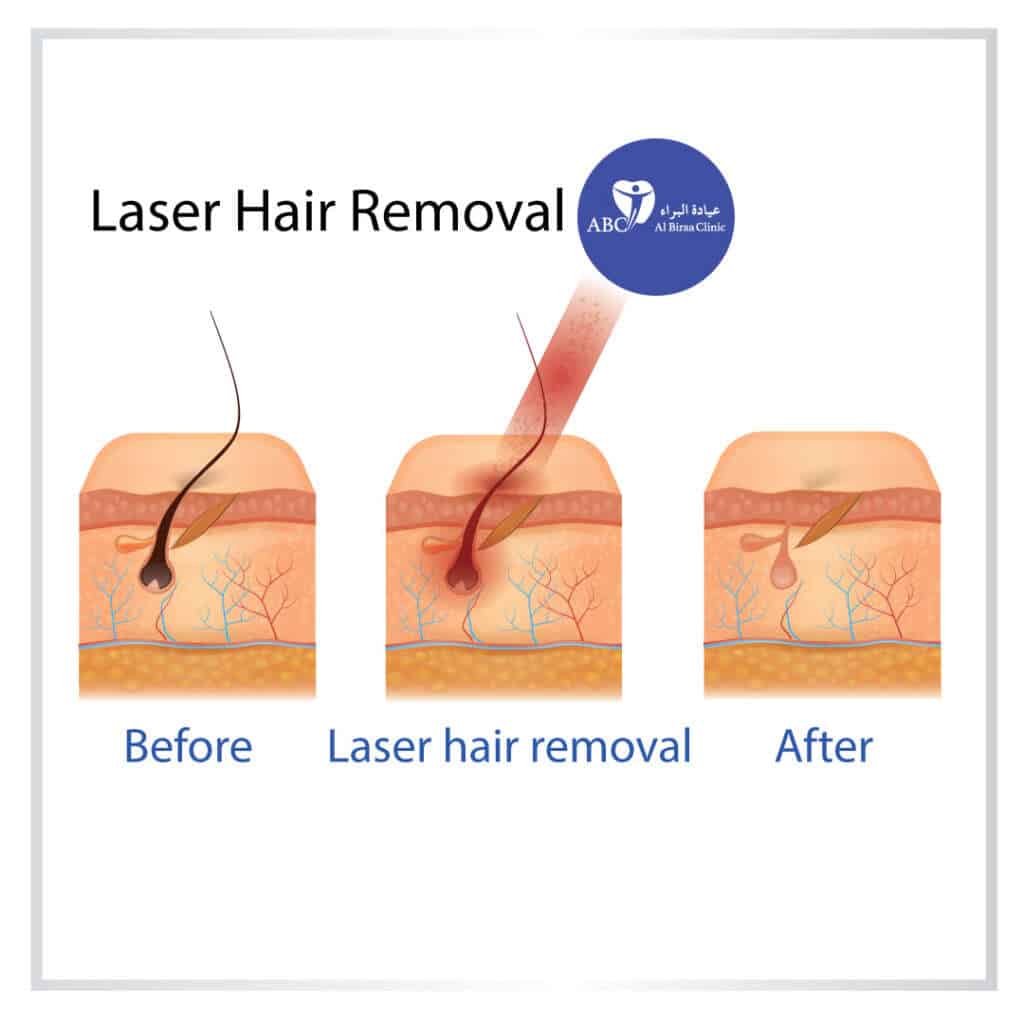Are you tired of the never-ending cycle of shaving, waxing, or using depilatory creams to get rid of unwanted hair? If so, you’re not alone. Many individuals seek a more permanent solution to hair removal, and laser hair removal has emerged as a popular and effective option. In this comprehensive guide, we will delve into the world of laser hair removal, exploring its benefits, how it works, what to expect during the treatment process, potential side effects, and much more.
By the end of this article, you’ll clearly understand whether laser hair removal is the right choice for you.
Understanding Laser Hair Removal, What Is Laser Hair Removal?
Laser hair removal is a cosmetic procedure that uses concentrated beams of light to target and destroy hair follicles, preventing hair growth in the treated area. It is a safe and effective method for reducing or eliminating unwanted hair on various parts of the body.

How Does Laser Hair Removal Work?
During a laser hair removal session, a specially trained technician uses a handheld device that emits a precise wavelength of light. This light is absorbed by the pigment in the hair follicles, heating them to the point of destruction. The surrounding skin remains unharmed. Over time, the damaged follicles are naturally shed, and new hair growth is inhibited.
The Science Behind Laser Hair Removal Laser hair removal relies on the principle of selective photothermolysis, which means that the laser targets specific structures (in this case, hair follicles) without affecting the surrounding tissue. The laser’s energy is absorbed by the melanin (pigment) in the hair, effectively disabling the follicle’s ability to grow hair.
Why Choose Laser Hair Removal? Benefits of Laser Hair Removal
- Long-Lasting Results: Unlike temporary hair removal methods, such as shaving or waxing, laser hair removal offers long-lasting results. Many individuals experience permanent hair reduction after a series of treatments.
- Precision: Laser technology allows for precise targeting of hair follicles while leaving the surrounding skin intact. This makes it suitable for sensitive areas like the face.
- Speed: Laser hair removal can treat multiple hair follicles at once, making it a quick and efficient procedure.
- Reduced Ingrown Hairs: Since laser hair removal prevents hair regrowth, it reduces the occurrence of ingrown hairs, a common problem with other hair removal methods. How Laser Hair Removal Compares to Other Methods
- Shaving: Shaving provides temporary results and requires frequent maintenance.
- Waxing: Waxing can be painful and may lead to ingrown hairs. It also requires hair to be a certain length for effective removal.
- Depilatory Creams: These creams dissolve hair, but the results are short-lived, and some people may experience skin irritation.
- Electrolysis: Electrolysis is another permanent hair removal method but is often slower and more painful than laser hair removal.

Preparing for Laser Hair Removal Consultation and Skin Evaluation Before undergoing laser hair removal, it’s essential to schedule a consultation with a qualified practitioner. During this consultation, your skin type, hair color, and medical history will be assessed to determine if you are a suitable candidate for the procedure.
Pre-Treatment Guidelines
- Avoid sun exposure and tanning beds for several weeks before the procedure. • Shave the treatment area a day or two before your appointment.
- Discontinue the use of products that may sensitize the skin, such as retinoids and alpha hydroxy acids, before treatment.

What to Expect During the Procedure
The Laser Hair Removal Process On the day of your treatment, you’ll arrive at the clinic with the treatment area clean and shaved. A numbing cream may be applied if necessary, although many patients find the procedure tolerable without it. You’ll wear protective eyewear to shield your eyes from the laser.
The technician will use the laser device to target the designated area. You may feel a slight snapping or stinging sensation as the laser pulses, but this discomfort is generally brief. Pain Management and Comfort The sensation experienced during laser hair removal varies from person to person and depends on the treatment area and individual pain threshold. Most individuals describe it as tolerable and compare it to the snap of a rubber band.
Duration of the Procedure
The duration of a laser hair removal session varies depending on the size of the treatment area. Smaller areas like the upper lip or underarms may take only a few minutes, while larger areas like the legs or back may take up to an hour.
Aftercare and Recovery Post-Treatment Care After the procedure, your skin may appear slightly red and feel warm, similar to a mild sunburn.
You’ll receive specific aftercare instructions, which may include:
- Applying a soothing cream or gel.
- Avoiding sun exposure and using sunscreen.
- Avoiding hot baths or saunas for a day or two. Potential Side Effects and How to Manage Them Common side effects of laser hair removal may include temporary redness, swelling, and minor discomfort. These typically subside within a few hours to a few days. In rare cases, side effects like blistering or changes in skin pigmentation can occur. Expected Results and Timeline Laser hair removal typically requires multiple sessions to achieve the desired results. The exact number of sessions varies depending on factors such as hair color, thickness, and the treatment area. Most people start to see a significant reduction in hair growth after 3 to 6 sessions.
Choosing the Right Provider Qualifications and Experience Selecting the right provider for your laser hair removal is crucial for safety and effective results. Ensure that the practitioner is licensed and has experience in performing laser treatments. Ask for before-and-after photos to assess their previous work. Technology and Equipment State-of-the-art laser technology and equipment play a significant role in the success of the procedure. Inquire about the type of laser used and its suitability for your skin type.



